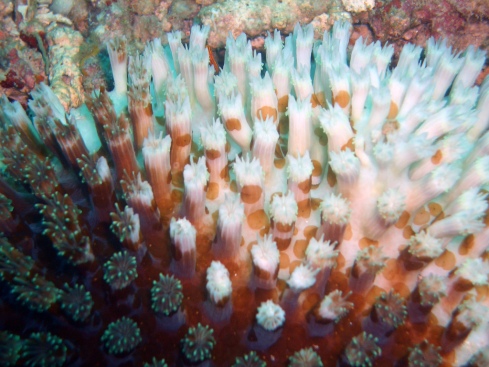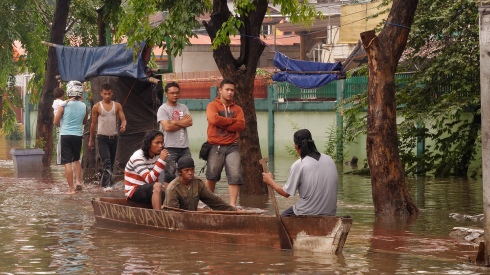
By PISA Program Assistant, Dr. Miriam Grinberg
As in Vietnam, Indonesia – the biggest economy in Southeast Asia – is growing at a steady pace year after year, with 15% of its GDP resting on the back of its agricultural sector. In fact, over 44% of Indonesian laborers are employed in this sector, and whether in rice production or fishing, all are feeling the impact of climate change — including creeping sea level rise.
An archipelago comprising over 17,500 islands, Indonesia has been cited as particularly prone to the harmful effects of climate change due to its high rate of poverty, high population density, and high concentration of assets (such as agricultural lands) exposed to extreme weather events. It is not only assets, however, that lie in the path of these events, but also Indonesians themselves: 47.2 million live in “vulnerable coastal areas,” and increased flooding is predicted to not only lead to higher death tolls from storm surges, but also widespread displacement in Jakarta (40% of which is located below sea level) and other major cities. Indonesia was also counted among the top 5 greenhouse gas emitters worldwide in 2015 behind China, the U.S., India, and Russia (though in per capita terms it exceeded the global average).
Sea level rise is proving particularly damaging to Indonesia: with an estimated 90 centimeter rise by 2050, 2,000 small islands in the country’s archipelago may disappear. The aforementioned increased flooding resulting from this, combined with the phenomenon of subsidence (in which groundwater extraction causes rock and sediment to pile atop one another over time, and by which Jakarta is sinking at a rate of 3 inches per year), has made Indonesians vulnerable not only to injury and displacement, but also to water-borne diseases like diarrhea, decreased crop growth and yield from oversalination, and damage to marine life.

The latter includes not only fishing grounds and aquaculture, but also coral reef bleaching. Coral reefs are very susceptible to the kinds of sea surface temperature changes accompanying climate change, and as they undergo bleaching, this endangers the diverse ecosystems they support and their ability to protect Indonesia’s already-assailable coastlines from an ever-increasing number of high-intensity storms.
In response to these events, the Indonesian government has undertaken several steps, including: creating a National Action Plan addressing climate change adaptation and mitigation strategies and needs; establishing an Indonesian Climate Change Trust Fund to distribute adaptation funding; publishing an Indonesian Climate Change Roadmap; limiting daily groundwater extraction; and constructing a $40 billion “Giant Sea Wall” off Jakarta Bay to protect the city from future superstorms.

What happens, however, as this “Giant Wall” gives way to inevitable sea level rise? Moreover, although it may hold storm surges at bay in the short term, it will have little impact on the continued sinking of Indonesia’s population centers — nor does it solve larger issues facing the country’s population, such as the lack of access to clean water (which, in turn, drives the widespread, illegal extraction of groundwater that intensifies subsidence). Rather than building more walls or threatening fines for illegal groundwater use (as Jakarta governor Basuki Tjajaja Purnama threatened to in 2014), then, it would be more beneficial to Indonesians – as well as to the region – if their leaders took a whole-of-government approach which emphasizes in equal parts socioeconomic development and environmental sustainability measures.



Leave a comment